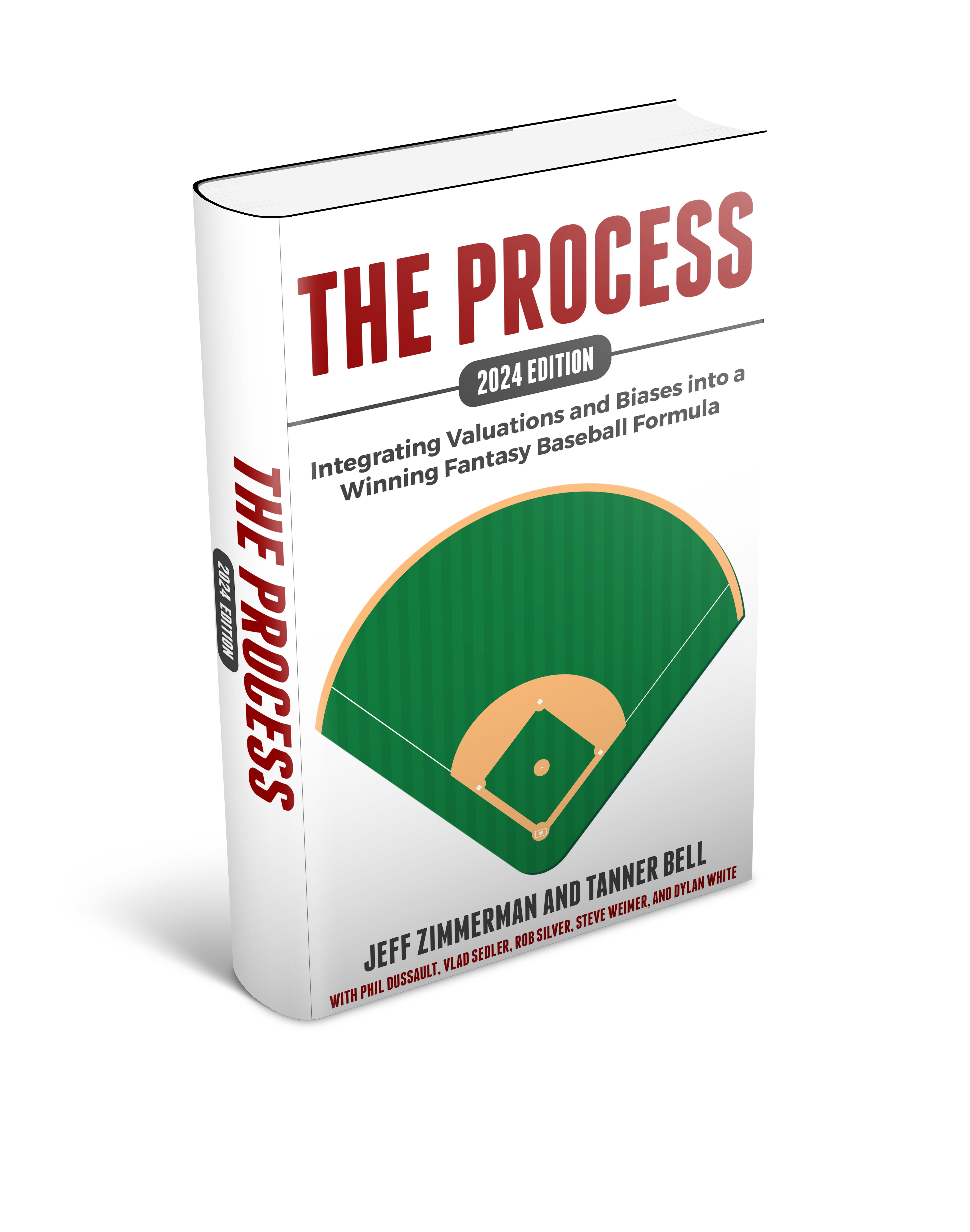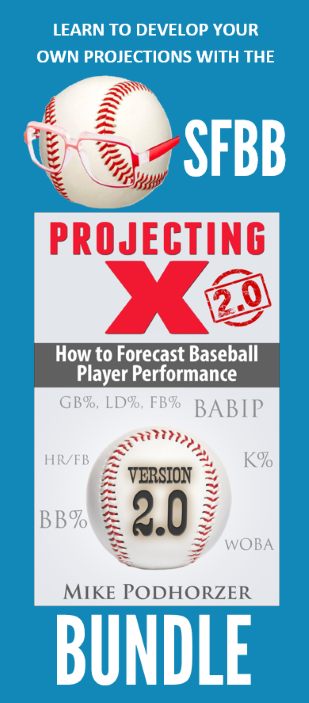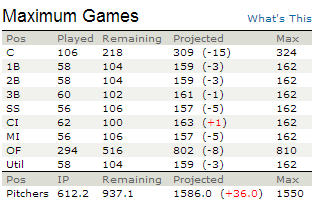
I play in a couple mixed leagues that use the standard rotisserie lineup configuration (if there is such a “standard” any longer) of 2 C, 1B, 3B, CI, 2B, SS, MI, 5 OF, and one UTIL/DH. In these two catcher leagues, I perpetually leave games played on the table because no catcher plays 162 games in a season. But in a league with games played limits, you’re given 324 games to be played by catchers during the season (162 games * 2 catchers).
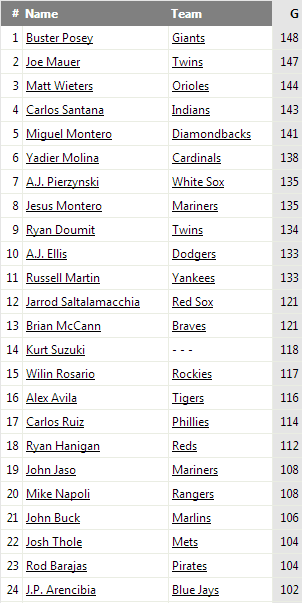
If you only carry two catchers all year, by the time you reach the end of the season you could easily be looking at coming up 60+ games short of the allotted 324. To illustrate, look at the catcher leaders in games played for 2012 (Note: these are not necessarily the top 24 fantasy catchers, just MLB games played leaders).
Some of the top fantasy options like Buster Posey and Joe Mauer play a lot of games (approaching 150). But when you start to account for the fact that 24 catchers must be started in a 12-team two-catcher league, you can see how many games will be left on the table (many don’t even get to 120 games). And each one of those games is a missed opportunity for counting stats like runs, home runs, and RBI.
I hate the idea of using a coveted bench spot to hold the 25th best catcher. What kind of stat line does such a player have? But missing out on 60-80 games played seems like a huge missed opportunity. So let’s get to the bottom of this.
We Need Data
To run our test, we’ll need the list of the top fantasy catchers for 2012. I’ve pulled that list according to Yahoo! ’12 rank, added games played, and final statistics, and also calculated each catcher’s per game counting stats (runs per game, HR per game, etc.).
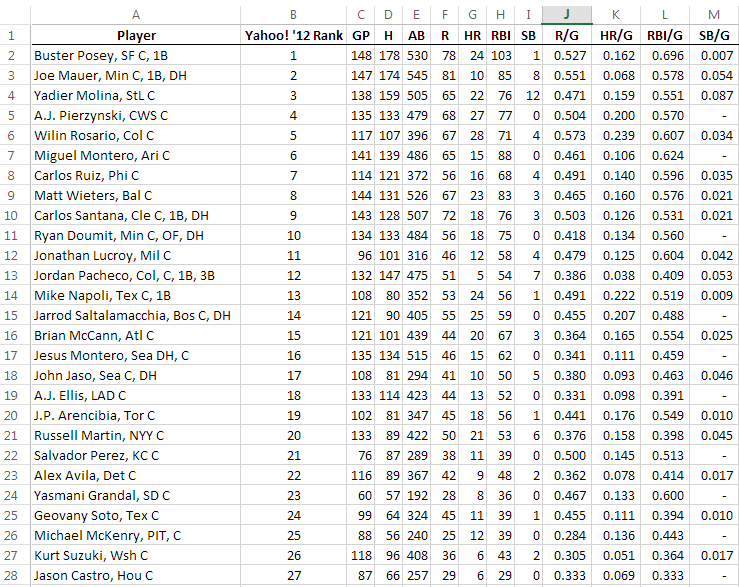
You Know What Happens When You Assume
To test the theory, let’s assume you drafted a highly-ranked reliable catcher and a late round sleeper. For 2012 that might have been someone like Matt Wieters and Jesus Montero. Wieters played in 144 games and Montero 135, for a total of 279 games. That leaves 45 games available to be played by another catcher (162 games allowed * 2 catchers = 324 games allowed – 279 games played = 45 remaining).
Looking at the list above, let’s also assume that catchers #21 through #27 are interchangeable. Once you reach that level of player, the marginal difference of moving up one ranking spot is minuscule. You should easily be able to snag a player from this group. The last seven players on the list have the following per game averages:
| R/G | HR/G | RBI/G | SB/G |
|---|---|---|---|
| 0.387 | 0.103 | 0.437 | 0.006 |
If you take those per game rates and extrapolate them out to the 45 games you would insert that catcher into, you get these totals:
| R | HR | RBI | SB |
|---|---|---|---|
| 17.394 | 4.647 | 19.683 | 0.285 |
Now take these numbers and apply the theory of standings gain points. In the preseason Razzball.com publishes the statistics it takes to win a rotisserie league (1,045 runs, 261 homers, 1,008 RBI, etc.). From this information and knowing where the other teams finish, you can derive an estimate of how many runs, HR, and RBI it takes to move up one spot in the standings (a standings gain point). I estimated those to be the following:
| R | HR | RBI | SB |
|---|---|---|---|
| 24.6 | 10.4 | 24.6 | 9.4 |
So it takes roughly 24.6 more runs to move up one spot in the standings. This is an average. Sometimes you’re going to need 30 to jump a team. Others only 10. The three catcher strategy looks to be worth about 17 runs. It might get you one more point in runs. Might not. And the same looks to be true for HR and RBI.
Rough estimate – if you apply this strategy, it looks to be worth about 2 rotisserie points in the standings.
But Consider The Opportunity Cost
As with any decision you make, it’s important to consider the opportunity cost (the options you forego by choosing the three catcher strategy). If you decide to carry three catchers, you’re deciding NOT to pursue other strategies. By taking up a roster spot with the extra catcher you will be missing the opportunity to add a hyped rookie called up during the season, or you may be unable to speculate on a bullpen transitioning to a new closer, or be unable to pick up a pitcher who’s made three hot starts in a row.
There are trade offs. But no decision has to be absolute and you can continuously evaluate the three catcher strategy throughout the season. If the next Yasiel Puig gets called up, you can drop catcher #3. When a fringe bench player later goes on the DL, resume the strategy until a better alternative arises.
If your league rules afford you a lot of bench spots or if the free agent pool is very weak, the three catcher strategy becomes more viable. If bench spots are at a premium or there are very talented free agents, the strategy is less appealing.
Another Consideration
You must also consider that as your starting two catchers miss more and more games, it becomes less likely that you’ll be able to fill in all of those missed games with the third catcher. In the scenario discussed above, Wieters and J. Montero, we had 45 games to fill with the third catcher. By monitoring your lineup for days Weiters and Montero aren’t starting and using BAL and SEA off days to start the third catcher, you can reasonable expect to fill most or all of these 45 games.
But if you are in a situation where your two starting catchers will only play 120 games, leaving 84 games left to make up, the odds of filling all 84 of those games decreases. If you assume that you have three catchers that will play 120 games each, that’s only 360 games combined. There will certainly be days when all three don’t start, meaning that game can’t be made up for without involving a fourth catcher. There will also be days when all three play, and you can only use two towards your lineup. Any day in which all three play is another of the 360 games that is gone and can’t be used toward the 324 possible.
Conclusion
This strategy won’t be beneficial in all leagues (if you can’t set a daily lineup), but there are many where it will have merit. If you have the bench spot for it, it will certainly help. If not, keep it in mind if you find yourself in a situation where you’re trying to gain ground in counting stats and a handful of runs or RBI will make a difference. Use it as another tool in your arsenal and keep it in mind as a tool for the stretch run in August and September.
Thanks for reading. Be smart.

